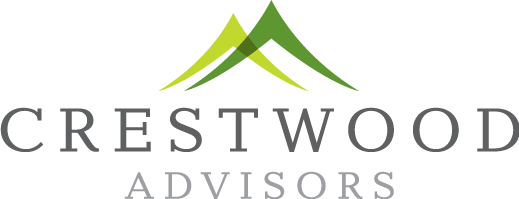By being thoughtful and strategic with your philanthropy, individuals can achieve their charitable goals while also being tax efficient and fostering future financial growth. Here, we explore effective charitable giving strategies and highlight how Crestwood Advisors can support your journey towards impactful giving.
Be strategic with your giving to maximize tax benefits
Donating appreciated securities allows you to avoid capital gains taxes while securing a charitable deduction for the asset’s full market value. Additionally, contributions to qualified charitable organizations are deductible from income taxes, providing immediate financial benefits. Collaborating with your Crestwood advisor can ensure you are giving as tax efficiently as possible.
Leveraging Donor-Advised Funds (DAFs)
When donating cash, securities, cryptocurrency or other assets into a Donor-Advised Funds (DAFs), donors receive an immediate tax deduction but can make grants to charities over time. One key advantage of DAFs is flexibility: donors can contribute in one year and then decide on the timing of gifts across one or more years. Additionally, unused funds within the DAF can be invested, maximizing the impact of your charitable giving. Administrative ease (no more keeping track of all those individual donations throughout the year!) and potential for growth make DAFs a powerful tool for integrating philanthropy into long-term financial plans.
Planning for Legacy Giving
Legacy giving, or planned giving, involves integrating charitable bequests into estate plans, ensuring your philanthropic goals endure beyond your lifetime. By designating a portion of your estate to charitable organizations, you can leave a lasting impact while potentially reducing estate taxes. Legacy giving ensures your charitable vision continues to benefit future generations.
Implementing Charitable Trusts
Charitable trusts, such as Charitable Remainder Trusts (CRTs) and Charitable Lead Trusts (CLTs), offer structured approaches to philanthropy while delivering significant tax benefits. A CRT provides an income stream over a specified period, with the remainder distributing to charity upon the beneficiary’s death. Conversely, a CLT allocates income to charity for a set term, with remaining assets eventually returning to you or your beneficiaries. These trusts are ideal for aligning charitable intentions with personal financial planning goals in 2024.
Exploring Qualified Charitable Distributions (QCDs)
Individuals over 70½ years old can donate up to $100,000 directly from their IRAs to qualified charities without incurring income taxes on the distributions through Qualified Charitable Distributions (QCDs). This strategy not only satisfies required minimum distributions (RMDs) but also significant tax benefits while supporting charitable causes directly.
Ready to transform your philanthropic impact in 2024?
Contact your team at Crestwood Advisors today to discuss how we can help you develop a charitable giving plan that aligns with your financial goals and maximizes your philanthropic impact.




